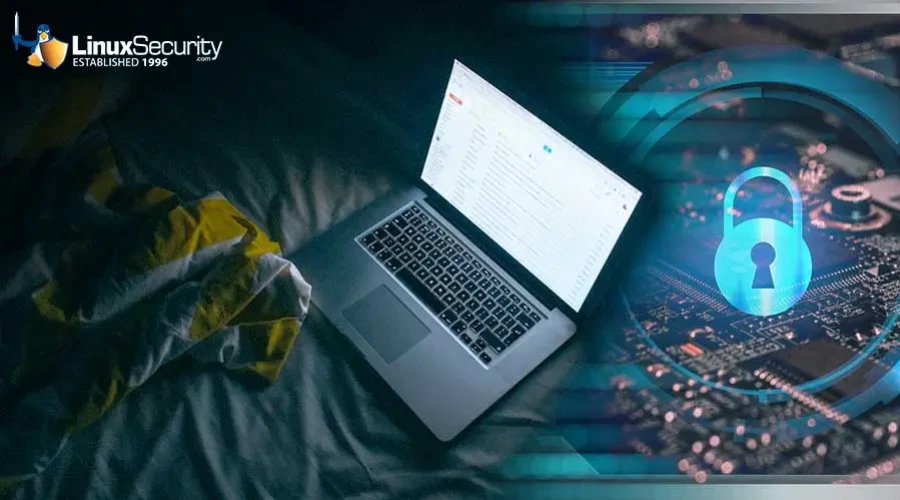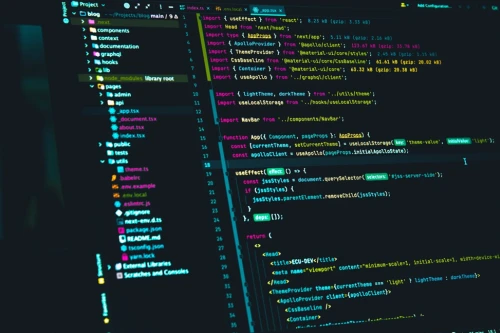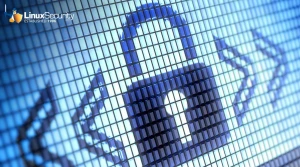Securing IT Assets: Practical Strategies for Linux Admins & IT Teams

Have you ever wondered why your organization needs IT asset management? ITAM or IT asset management ensures your organization's assets are deployed, upgraded, maintained, accounted for, and disposed of in due time. It ensures that your organization's valuable items (both tangible and intangible) are being used and tracked.
Before exploring IT asset management further, let's first understand IT assets. These typically include all software systems, hardware, and organization-value information. They often have a finite period of use, so to maximize their value, they must be proactively managed. This is where IT asset management comes into play. Read on as we discuss IT asset management and security in Linux and provide practical advice Linux admins can implement for secure IT management.
Understanding IT Asset Management in Linux
In the context of Linux environments, ITAM manages hardware (servers, workstations, networking equipment), software (operating systems, applications, libraries), and related infrastructure (cloud instances, containers). The Scope of ITAM in Linux includes:
- Track physical servers and workstations, ensuring optimal utilization and timely maintenance.
- Maintain and document system configurations.
- Ensure all assets comply with regulatory requirements and organizational policies.
- Manage licenses, versions, and configurations of Linux distributions and installed software.
Why Is ITAM Challenging and Crucial in Linux Environments?
 Some of the challenges that ITAM faces in a Linux environment include its open-source nature, which leads to a high volume of unmanaged, potentially outdated, or redundant applications.
Some of the challenges that ITAM faces in a Linux environment include its open-source nature, which leads to a high volume of unmanaged, potentially outdated, or redundant applications.
Linux environments often span various distributions, each with different management tools and conventions. They also frequently use complex package management systems with numerous dependencies, making software tracking and updating intricate. Users with root or sudo access can install or modify software independently, complicating centralized asset management. Most importantly, unmanaged or poorly managed assets increase the risk of security vulnerabilities and breaches.
However, ITAM plays a crucial role in identifying redundant or unused assets, which helps optimize costs by reallocating or disposing of them. It ensures all assets are accounted for and up to date, helping minimize security risks and ensuring compliance with regulations. Its accurate asset data provides insights that support strategic planning and investment decisions.
Essential ITAM Best Practices Tailored for Linux Administrators.
Here are some IT asset management best practices.
- Centralized asset repository: Consider establishing a centralized system for tracking all hardware and software assets. You can also use tools like Ansible for configuration and asset management.
- Asset discovery and inventory: Implement automated discovery tools to keep track of assets and their configurations.
- Regular audits and compliance checks: Conduct regular audits to ensure all assets comply with policies and standards. Consider tools like The OpenSCAP for automated vulnerability checking, allowing you to be proactive.
What Are Security Challenges in Managing Linux IT Assets?
Some of the common vulnerabilities associated with Linux systems are:
- Privilege escalation vulnerabilities that allow users to gain unauthorized access.
- Configuration errors, such as weak passwords, unnecessary services running, and not restricting access to sensitive areas, create vulnerabilities that attackers can exploit.
- Malware, viruses, trojans, and worms can affect Linux systems, compromising system security.
- Physical attacks such as tampering and theft.
 There is also a massive risk of unmanaged and unpatched assets, which are more likely to contain security vulnerabilities that attackers can exploit, especially if they are not current. Such issues can lead to data breaches and expose sensitive information, such as a client’s personal or credit card information.
There is also a massive risk of unmanaged and unpatched assets, which are more likely to contain security vulnerabilities that attackers can exploit, especially if they are not current. Such issues can lead to data breaches and expose sensitive information, such as a client’s personal or credit card information.
They also target intellectual property. Unpatched systems are also prime targets for malware and ransomware attacks, which can disrupt your organization’s operations and cause significant financial damage.
Open-source software licenses are complex and difficult to manage for various reasons. First, there are legal risks, as failure to comply with open-source licenses can result in legal actions, financial penalties, and reputational damage.
Secondly, open-source projects often rely on numerous dependencies, each with its licensing requirements. Dependencies refer to frameworks, external libraries, or modules a software project needs to function.
Thirdly, to avoid legal conflicts, you also must ensure compatibility between different open-source licenses. This means checking if you can modify, use, or distribute code under another license’s terms. Lastly, your organization must create, Implement, and enforce organizational policies regarding open-source software use and distribution.
What Is The Role of ITAM in Enhancing Security Posture in Linux Environments?
IT asset management plays a crucial role in enhancing Linux’s security posture.
Framework for Identifying and Mitigating Security Risks.
ITAM maintains a detailed and up-to-date inventory of the organization's hardware, software, and network assets. It helps identify the most critical assets you must prioritize for security and tracks dependencies between different software components to understand potential risk points. Additionally, it can further identify anomalies indicating security breaches or vulnerabilities.
An updated inventory will allow you to accurately and quickly respond to security incidents, minimize damage, and speed up recovery.
Managing Software Versions and Patches
Efficient asset management helps manage software versions and patches by implementing automated patch management tools to ensure the timely application of security patches and maintaining a log of patches to ensure traceability and accountability.
ITAM is also essential in assessing the risk posed by unpatched systems and prioritizing patching based on severity. It regularly scans systems for known vulnerabilities and applies patches or mitigations as necessary. It will also keep track of software versions to ensure that all systems are running supported and secure versions.
Compliance With Security Standards and Policies
Your organization needs to define security policies that align with regulatory requirements and industry standards, and you can use IT asset management tools to automate policy enforcement across all assets. It will also conduct regular security audits and continuously monitor systems to ensure compliance with security policies. ITAM can even help Identify and address gaps in compliance to improve your organization’s overall security posture.
What Are the Benefits of Automation in IT Assets?
It isn't enough just to have an ITAM; you must also apply automation to your IT asset management program. Here's why:
Enhancing Accuracy and Timeliness of Asset Inventories
An automated system will monitor and update your asset inventory in real time, ensuring data is always current. When you add a new hardware or software asset, it can be quickly detected and recorded, which reduces the lag between inventory update and asset deployment.
Automated ITAM can routinely schedule maintenance checks so each asset operates in peak conditions, reducing downtime. It also makes troubleshooting more straightforward and faster, helping minimize workflow disruptions.
Reducing Manual Effort and Minimizing Human Error
Perhaps the most significant advantage is its ability to reduce human error associated with manual data entry. It can also provide more comprehensive details about each asset, including configurations, versions, and relationships with other assets, which manual processes often overlook. Similarly, it can free up your IT staff to focus on more strategic and complex tasks rather than spending time on repetitive manual activities.
Automatically Enforcing Security Policies and Compliance Requirements
Automated tools can continuously check for compliance with security policies and regulatory requirements, ensuring that all assets adhere to established standards. If automated ITAM detects non-compliance or a security policy violation, it can immediately take corrective actions, such as applying patches or reconfiguring settings.
How Can I Integrate ITAM with Linux Security Tools and Strategies?
Integrating ITAM with Linux security tools enhances IT assets' visibility, control, and security. What better way to understand this than with the help of case studies? For example, a financial institution wanted to enhance its Linux infrastructure with thousands of servers and endpoints. It integrated Red Hat Satellite for ITAM and OpenSCAP for compliance scanning, which automated asset discovery and inventory management, ensured continuous compliance scanning against regulatory standards, and automated patch management for all Linux servers.
It saw results such as achieving real-time visibility into asset inventory, reducing manual effort in managing and securing assets, and significantly decreasing unpatched vulnerabilities and faster incident response times.
Automation in Linux Systems for ITAM
 You can automate the following IATM practices in Linux:
You can automate the following IATM practices in Linux:
- Automated asset discovery and inventory management: Continuously scan the network for new and existing assets, ensuring the inventory is always up-to-date
- Configuration management: Automating systems deployment, configuration, and management
- Patch management: Automate the downloading and application of patches across all systems, ensuring timely updates and reducing vulnerabilities.
- Lifecycle management: Automate the entire lifecycle of assets from procurement to decommissioning, ensuring efficient management and disposal.
The benefits of leveraging Linux systems for ITAM and automation include:
- Efficiency and productivity
- Reduce human error
- Standardized configurations
- High scalability
- Timely patch management
- Reduced labor costs
- Optimize Resource Utilization
Tools and Scripts for Automating ITAM Processes in Linux
Here’s an overview of open-source ITAM and security tools which are compatible with Linux:
Tools for Automating ITAM Processes in Linux
Here are a few examples of open-source tools for automating ITAm process in Linux:
Snipe-IT
Snipe-IT ensures transparency, oversight, and security across the board. Its powerful REST API allows organizations to develop custom automation based on their needs.
For Linux environments, Snipe-IT helps maintain an accurate inventory of physical and virtual assets, ensuring all devices and components are accounted for and appropriately managed throughout their lifecycle.
OpenVAS
The Open Vulnerability Assessment System is an open-source vulnerability scanning and management framework that provides a comprehensive suite of tools for detecting security vulnerabilities in systems and applications. It also assists by scanning Linux servers and devices for known vulnerabilities, generating detailed reports, and suggesting remediation actions.
Rundeck
Rundeck allows administrators to define, schedule, and execute jobs on any number of nodes via a web-based or command-line interface. Rundeck automates repetitive tasks such as software deployment, daily reports, system updates, file transfers, and backups for Linux asset management, improving efficiency and consistency.
AWX/Ansible Tower
AWX provides a web-based user interface, REST API, and task engine for managing Ansible automation tasks. Ansible Tower centralizes IT automation, making it easier to manage large-scale environments. Linux allows administrators to manage playbooks, inventory, and variables from a central location, enhancing control, visibility, and consistency across all managed assets.
Puppet
Puppet is a configuration management tool that automates the provisioning, configuration, and management of servers and other IT resources. In Linux systems, it helps maintain desired state configurations, reduce configuration drift, and improve operational efficiency by managing large numbers of servers with minimal manual intervention.
Chef
Chef transforms infrastructure into code, automating infrastructure configuration, deployment, and management. Linux asset management ensures that all systems are consistently configured according to best practices and security policies, reducing the risk of human error.
SaltStack
Saltsack can automate repetitive tasks, deploy applications, and manage complex IT environments. SaltStack automates system configuration, software installation, and patch management in Linux asset management, enhancing operational efficiency and consistency.
Foreman
Foreman is an open-source lifecycle management tool for physical and virtual servers. It offers provisioning, configuration management, and monitoring capabilities. In Linux, it automates the provisioning of new servers, manages configuration changes, and monitors system health and performance.
Scripts for Automating ITAM Processes in Linux
The following scripts can be used for automating ITAM processes in Linux:
Custom Bash scripts
Custom Bash scripts are powerful tools for automating various ITAM tasks in Linux environments. For instance, a Bash script can be written to scan the network, compile a list of active assets, and check the versions of installed software. Once created, you can schedule these scripts to run regularly using Cron jobs, ensuring continuous asset tracking and up-to-date inventory data.
Python
Python, with its rich ecosystem of libraries, is an excellent choice for more complex ITAM automation tasks. Libraries like Paramiko allow automated SSH (Secure Shell) connections to gather system information. Requests can interact with REST APIs to collect and update asset data, and Pandas offers powerful data manipulation and analysis capabilities.
Example Script Repositories
Script repository examples include:
GitHub
GitHub is a valuable resource for finding open-source ITAM scripts. In Linux, these scripts provide a solid foundation and can be tailored to meet specific organizational needs, speeding up the implementation of automated ITAM processes.
Cron
Cron is a time-based job scheduler in Unix-like operating systems, ideal for scheduling and automating script execution. Using Cron, administrators can ensure that their custom ITAM scripts run at specified intervals, such as daily, weekly, or monthly. This regular execution helps maintain an up-to-date and accurate asset inventory.
How Can I Combine Tools with Scripts?
 Automation's true power comes from effectively combining these tools and scripts to create a cohesive ITAM automation strategy. This could involve using Ansible to automatically deploy and configure Rundeck with your custom scripts, which are scheduled to collect IT asset data regularly. You can then manage the output data through an asset database like Snipe-IT for a clear and up-to-date view of IT assets.
Automation's true power comes from effectively combining these tools and scripts to create a cohesive ITAM automation strategy. This could involve using Ansible to automatically deploy and configure Rundeck with your custom scripts, which are scheduled to collect IT asset data regularly. You can then manage the output data through an asset database like Snipe-IT for a clear and up-to-date view of IT assets.
By utilizing these tools and scripts, Linux administrators can automate a significant portion of their ITAM tasks, reducing error, saving time, and ensuring compliance. With Linux’s strong support for open-source solutions, most of these tools can be adopted without substantial upfront investment, making them suitable for businesses of all sizes.
Our Final Thoughts on the Importance of ITAM for Linux Admins & Organizations
IT asset management (ITAM) is essential for helping organizations effectively manage and secure their hardware, software, and network assets, especially in Linux environments. ITAM ensures you readily comply with regulations and organizational policies by maintaining accurate inventories and configurations.
















